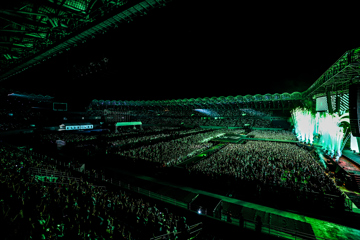Finding The Balance Between The Pragmatic & The Poetic
"I think if perfection is driving a recording you can end up in danger of sucking all the life and magic out of it."

Fans of multi-award winning New Zealander Mel Parsons may have noticed a different quality to her folky strains on her latest album, Drylands. The vocals are duskier, the lyrics more candid and the general vibe seems to tap a rawer emotional palette than her first two records. Life and death situations will do that to an artist.
As a self-described "indie-folk storyteller", one of Drylands' most powerful tracks, Get Out Alive, tells the story of a terrifying car accident with brutal frankness. Despite totalling her car, Parsons was mercifully not seriously injured, but the emotional reflection this event prompted produced some of her most affecting music to date. In actual fact, much of this album is not directly influenced by this harrowing experience, but nonetheless, there seems to be a vale of beautiful, ineffable melancholy draped across every track. That's perhaps unsurprising, given the emotionally alert approach Parsons takes to songwriting. "The vibe is always the most important thing in the studio. I think if perfection is driving a recording you can end up in danger of sucking all the life and magic out of it," she shares.
That's not to say Parsons is all heart and no head. She has been a full-time touring artist since her debut album in 2009, with a gruelling on-the-road schedule, trying out new material in the sink-or-swim arena of live performance. "Right before we headed into the studio to record Drylands, I had a big tour - 20 shows around NZ, which worked out super well for road-testing the album," Parsons says. "It was a great opportunity to work out which songs audiences were responded to most and also really helped to tighten the arrangements."
There's a telling equilibrium between pragmatism and poetry in Parsons' creative process. It's perhaps unsurprising that, given her own combination of emotional frankness and elbow grease work ethic, she would choose to collaborate with a similarly inclined musician for Drylands, which was recorded at Lee Prebble's Surgery Studios in Wellington. "He dances the line between hard work and good vibe," Parsons reveals. "He's like 'the boss'."
Don't miss a beat with our FREE daily newsletter
It's a partnership that has released a new richness in her music. From the relatively pared back, folk-focused sound world of her debut album, Over My Shoulder or even her second, Red Grey Blue (both of which won Folk Album of the Year at the NZ Music Awards), Drylands has a harder, thicker edge which is reflected in the breadth and variety of the instrumentation, which includes exotic colours like mandolins and steel-string guitars as well as orchestral colours courtesy of trumpet and cello solos. While production values on this latest album offer a greater depth to her sound, Parsons still reserves the right to take her songs to their most exposed iteration. "Touring with my full band, I like to stay close to the recordings. Audiences enjoy hearing what they know," she explains. "But when I'm performing solo, my songs become stripped-back and intimate."







